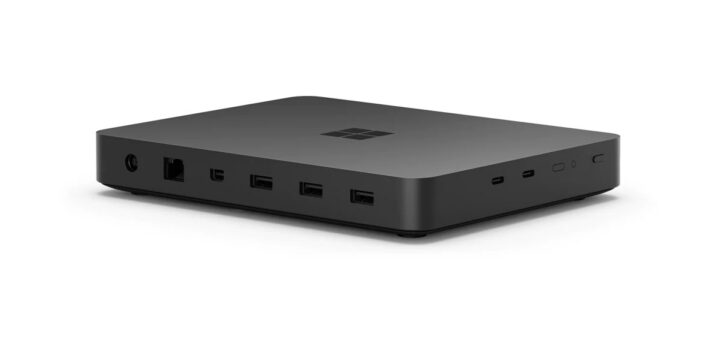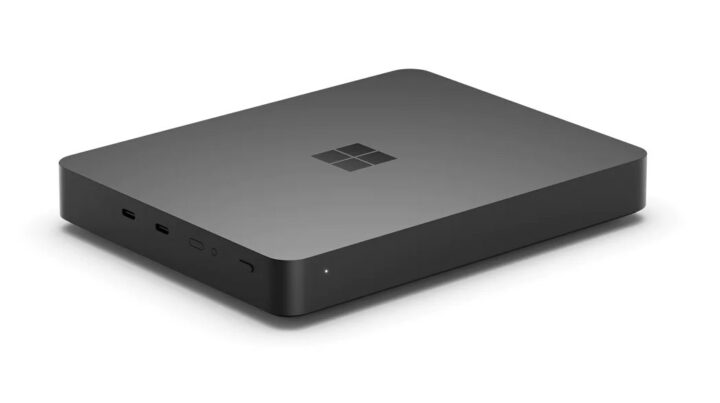Microsoft has just introduced the Windows Dev Kit 2023, that’s basically a Windows 11 Arm mini PC powered by a Qualcomm Snapdragon 8cx Gen 3 processor designed for developers of Windows programs.
Previously known as “Project Volterra”, the system comes with 32GB RAM, 512GB NVMe storage, mini DP video output, Ethernet, WiFi 6, and Bluetooth 5.1 connectivity, as well as five USB 3.2 Gen 2 ports, and more.
Windows Dev Kit 2023 specifications:
- SoC – Qualcomm Snapdragon 8cx Gen 3 compute platform with
- CPU – 4x 3.0 GHz Prime cores, 4x 2.4 GHz Efficiency Cores
- GPU – Unnamed Adreno GPU with DirectX 12 (DX12) API support
- DSP – Qualcomm Hexagon Processor, Qualcomm Sensing Hub
- AI – Qualcomm Neural Processing Engine SDK support for AI (up to 29+ TOPS)
- System Memory – 32GB LPDDR4x RAM
- Storage – 512GB NVMe SSD
- Video Output – Mini DisplayPort (mini DP) with support for HBR2
- Connectivity
- Ethernet RJ45 port
- WiFi 6 and Bluetooth 5.1
- USB – 3x USB 3.2 Gen 2 Type-A ports, 2x USB 3.2 Gen 2Type-C ports
- Security – sTPM
- Misc – Power button, boot button, and UEFI button
- Dimensions – 196 x 152 x 27.6 mm
- Weight – 960 grams
- Materials – Shell made with 20% recycled ocean plastic
The Windows Dev Kit 2023 mini PC ships with Windows 11 Pro and the package also includes a power supply. Microsoft provides a native Arm64 toolchain with Visual Studio 2022 17.4, runtimes, libraries, and frameworks, and the system is powerful enough to run Arm64 virtual machines, CI/CD infrastructure, and services to build, test, and release code. It is also suitable for AI applications with the Qualcomm Neural Processing SDK.
As a side note, preliminary support for the Snapdragon 8cx Gen 3 was added to Linux 6.0, and more specifically for the Lenovo Thinkpad X13s laptop. Somebody managed to boot an Arch Linux Arm image on the laptop, so it might work on the Windows devkit as well, bearing in mind that many features of the Snapdragon 8cx Gen3 will not be supported.
Microsoft sells the development kit for $599.99 with a one-year limited hardware warranty. The devkit is only available in Australia, Canada, China, France, Germany, Japan, the United Kingdom, and the United States at this time, and if you try to access the shop from another country you may be greeted with a 404 page. I know since I had to use a VPN to access it… Further details may be found in the announcement.

Jean-Luc started CNX Software in 2010 as a part-time endeavor, before quitting his job as a software engineering manager, and starting to write daily news, and reviews full time later in 2011.
Support CNX Software! Donate via cryptocurrencies, become a Patron on Patreon, or purchase goods on Amazon or Aliexpress






